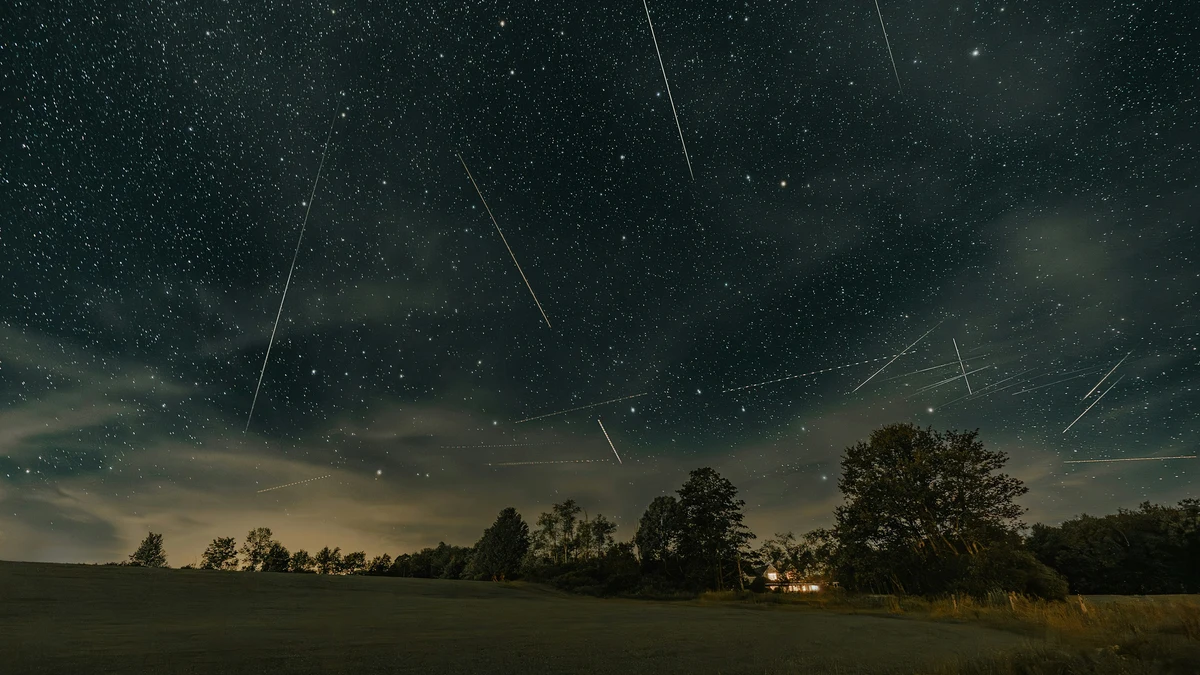
Summer is one of the best times to enjoy the meteor showers in Spain. The famous Perseids and the Delta Aquariids They illuminate the sky for several nights in a spectacular way.
You may be very attracted to these types of events, but you don’t know exactly why a meteor shower occursIn this article we explain how this event is formed and we give you all the details about one of the meteor showers most anticipated of August: The Perseids.
The best day and time to see the Perseids 2024
The Perseids 2024, also known as Tears of Saint Lawrencewill have their Peak activity between 11 and 13 August 2024according to data from the National Astronomical Observatory.
Specifically, the beak The most active period is expected to occur on August 12with a rate of 110 meteors/hour, between 3 and 6 pm, peninsular Spanish time. However, the Perseids They begin to be visible from July 17th and end around August 24, so they can be observed for several weeks.
In general, the best times to observe the Perseids are during the early hours of the morning or at dusk, starting at 10:00 p.m. There is also a highly recommended time, which is just before dawnaround four in the morning.
One piece of good news regarding Perseid viewing in 2024 is that the moon will be in its first quarter during the peak of activity, meaning that There will be little interference from moonlight and the conditions will be excellent for observation.
How a meteor shower is created
Meteor showers occur when Earth passes through a stream of debris from a comet or, in some cases, from an asteroid. Debris is dust and rock particles that have been released from the comet or asteroid along its orbit around the Sun. Meteors (popularly known as shooting starss) that appear to radiate from a specific point in the sky, called radiant.
In technical terms, A meteor is the name given to the phenomenon resulting from the penetration at high speed of a particle of matter (meteoroid). The vaporization of the particle by its collision with air molecules produces a luminosity that makes this phenomenon observable.
Its duration is usually a fraction of a second. The height at which the meteor becomes visible is around 100 kilometres, although this depends somewhat on the speed of penetration, with the particles that hit at a higher speed evaporating at a higher altitude.
Particles between a tenth of a millimetre and a few centimetres in size are completely consumed above 50 kilometres, although the great brightness and transverse speed of some of them make them appear close to the observer.
Only a few meteoroids, with a sufficiently large initial mass (>1 kg) and a very solid consistency (rocky, metallic), reach the ground each day, becoming known as meteorites, according to the National Astronomical Observatory.
There are more than 140 shooting star showers throughout the year.Each one has a name assigned to them based on the constellation in which they were born.
The Orionids come from Orion, the Lyrids from Lyra. The Perseids are born in the constellation of Perseuswhile the Aquariids come from Aquarius.
How to see a meteor shower properly
The most important thing to optimally view a meteor shower is to position yourself in a place without light pollution.
It is highly recommended to observe the meteors from an open-sky location without any obstacles to the view.
If you can get to a mountainous or rural area, where the sky is clear and there are no buildings, you are sure to have a fascinating experience.
Lie down comfortably and let your eyes adjust to the dark This is the best way to enjoy the show. No telescopes or binoculars are needed.
Source: Lasexta
Bruce is a talented author and journalist with a passion for entertainment . He currently works as a writer at the 247 News Agency, where he has established himself as a respected voice in the industry.












